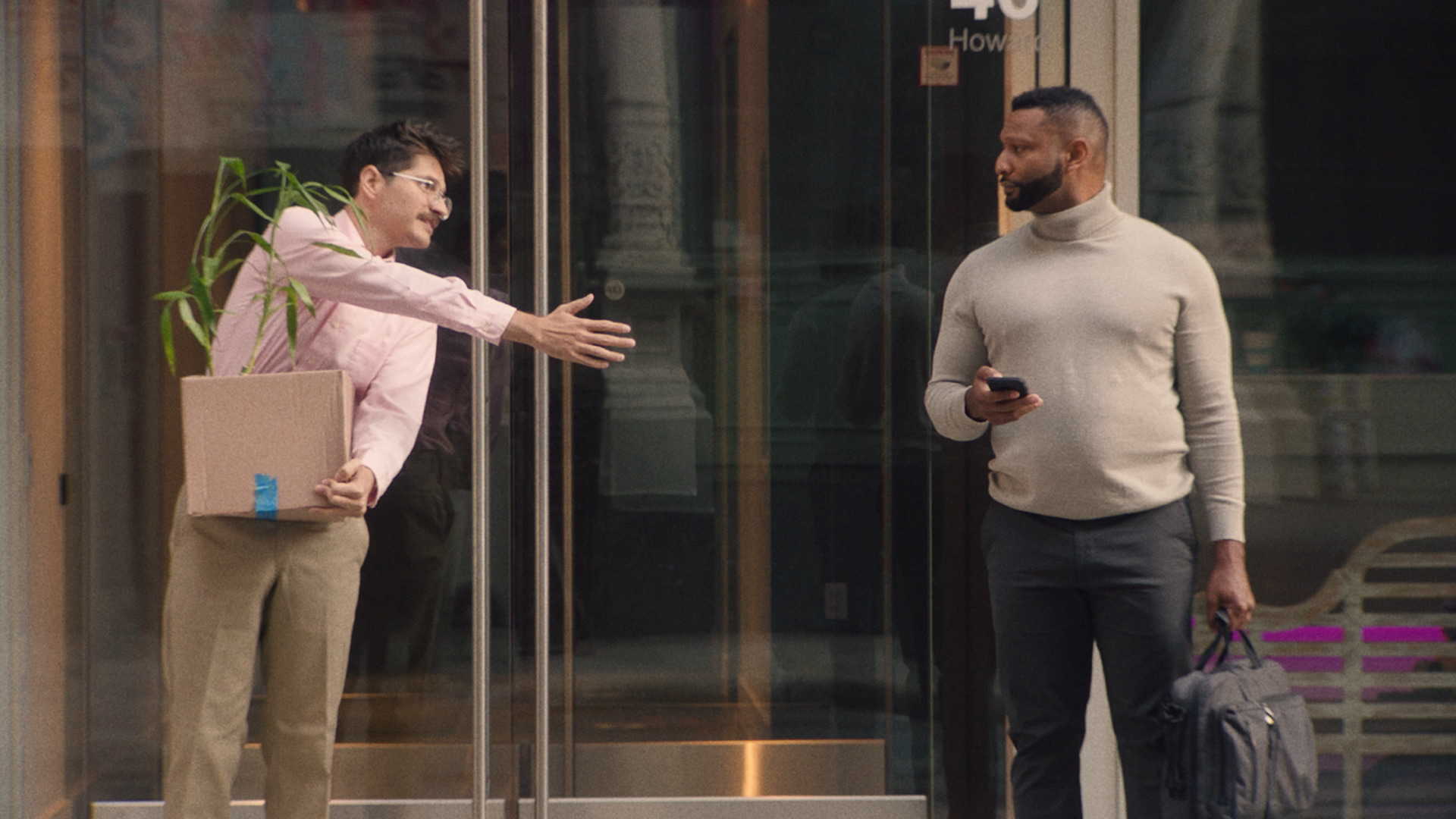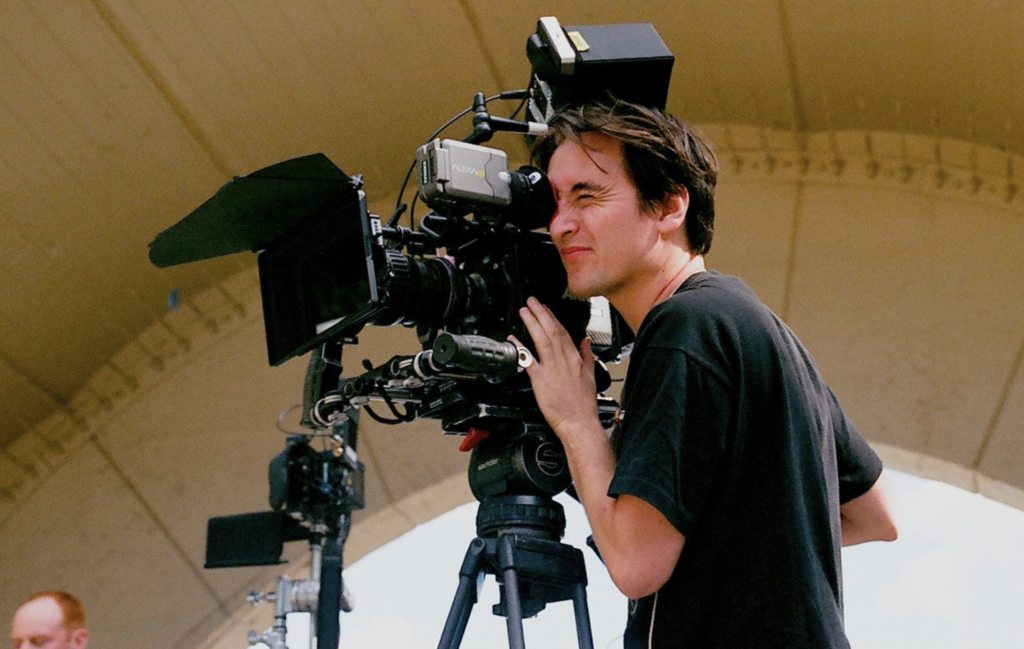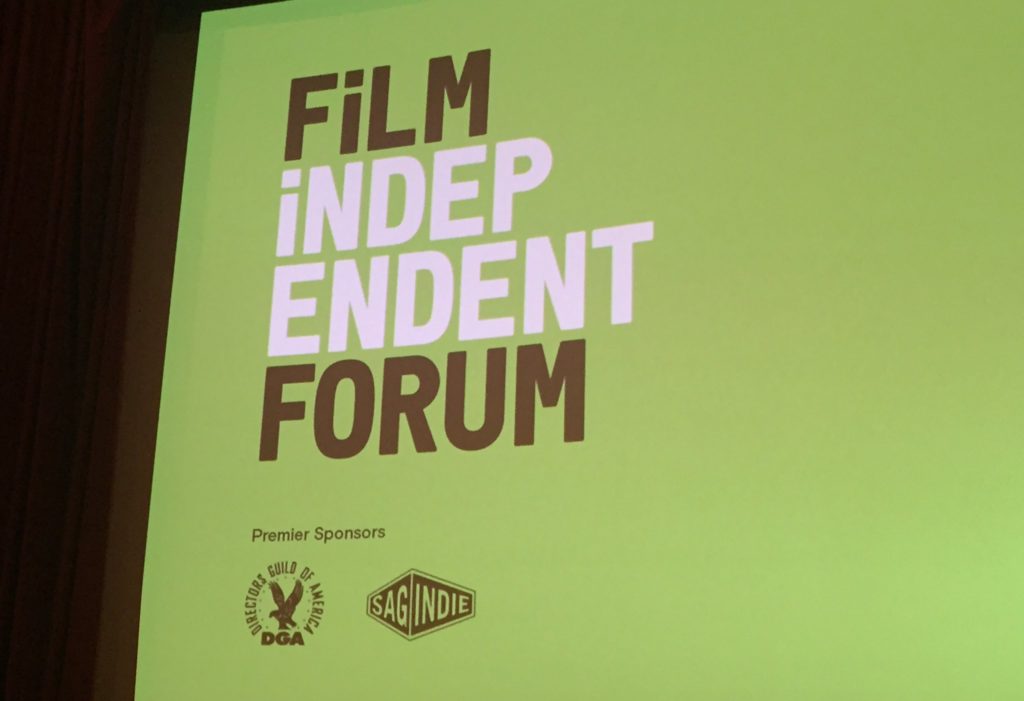As a co-founder of the Florida and Brooklyn-based filmmaker collective 5th Floor Pictures, RYAN MARTIN BROWN has worn practically every hat one could wear in film production. On-screen he has acted in films including Lynne Ramsay’s You Were Never Really Here and Justin Zuckerman’s Yelling Fire in an Empty Theater (which he also produced). His producing credits include Paula Andrea González-Nasser’s Limestone and Chris Osborn’s Gussy, while he edited films including April Moore’s Gilt and Nicole Machon’s Emma Inspired, and was assistant editor on Netflix’s Jeen-yuhs: A Kanye Trilogy. Additional credits run the gamut from camera to costumes to casting and more. All along, he honed his own writing and directing skills with shorts such as Reckless and Short List.
When it came time to make his feature-length debut as writer/director, he tapped into his pool of frequent collaborators and set forth on an experiment to make a movie “to learn how to get better at making movies.” That result, FREE TIME, follows the post-employment adventures (or lack-thereof) of twentysomething New Yorker Drew, played by Colin Burgess. The film was shot on-location in New York over ten days and went on to screen at festivals including Indy Film Fest, Independent Film Festival Boston, Montclair Film Festival, and Sidewalk Film Festival. Free Time will arrive in select theaters starting on March 22, courtesy of upstart distributor Cartilage Films.
We spoke with Free Time writer/director/editor Ryan Martin Brown about how he got the film made and the lessons he learned along the way.
——
COLIN McCORMACK: You shot Free Time in ten days, which is a remarkable feat. Before that first day of principal photography, how long had the project been in the works?
RYAN MARTIN BROWN: It was in the works only in the sense that it existed. I had written it as a distraction script during the initial few months of the Covid lockdown. I was trying to write a different movie, something for Jessie Pinnick, who does appear in [Free Time] briefly. It was a script that was thematically similar but a little bit more heightened, and I couldn’t figure it out. A friend was like, “Well, why don’t you just take the general idea of that movie and write the most straightforward version of it?” And that’s where the concept of Free Time came from, the most simple version being: Guy has a job, doesn’t want it anymore, gets out, doesn’t know what to do. Both movies were about a desire for freedom and then not knowing what to do with it. I wrote the script fairly quickly with all that ample time during the pandemic. [There] was never really the intention to make it, it was just sitting to the side for a while, and as time went by we never really figured out how to make that other movie work. And eventually, we were like, “Well, this one’s here. What about this?” And as soon as we made that decision, I think we were shooting it two or three months later.
CM: And you wrote the role of Drew with Colin Burgess in mind. How did you first connect with him?
RMB: There are a lot of amazing performers in Brooklyn, usually comedians, who are also [in] tons of films. I think we had seen Colin in a bunch of work on the website NoBudge. And he did a really brief, two-day role in a film I produced called Yelling Fire in an Empty Theater, so we got to know each other then. And we knew a lot of the same people here in Brooklyn. So during Covid, I was just thinking about working with Colin on that movie so it was easy to plug him in to what this movie was. Colin’s got a lot of love for comedies of the 1960s and 1970s, and I think that’s what we were drawing on a lot here. So it was very easy to imagine bringing his sensibility and what he finds funny into that space.
CM: When you have a script like this where he is crossing paths with so many funny, diverse characters, how fun was that casting process plugging different people into all of those roles?
RMB: It was a blast. It was the most fun part of it. There are probably more characters in this movie than the advice goes when you’re doing a really small shoot. But it was the appeal to me, Mackenzie Jamieson, Justin Zuckerman, Nolan Kelly, and Paula González — all the producers who worked on the movie. The fun of it for us was that we know all these amazing people so it was hard not to at every moment want to be like, “Oh, what if Bardia [Salimi] came in here?” So yeah, it was a blast. Even in the writing process, it was easy to go to the next page and think about someone else we knew that would be fun to work with and throw them in. The whole movie was written with people in mind, not that everybody could do it. There are friends playing characters with different friends’ names because it was originally written for them. That was the dream and it’s what makes the movie still somewhat enjoyable to watch for me at least. I get to see it and be like, Oh, this is this person’s scene! So it is a joy in that way.
CM: When you’re writing a script where you’re tailoring it to the people or things you have at your disposal, did the end product reflect pretty closely to the original script? Did you have to change a lot of things up on the fly?
RMB: It was a mix. It’s probably closer to the script than we even thought it might be going into it. We certainly knew we were going to have to be flexible a lot. And surprisingly, we just had an amazing amount of luck. Whether in asking somewhere that we wrote for and them being like, “Yeah, come to my apartment.” Or just the fact that it never rained the whole shoot. If that had happened, I don’t know what we would have done. We didn’t have the ability to have much of a backup plan. So all that stuff we got really lucky with. Anything different in the script was more [because] we were being loose on each day with what we thought the best version of the scene could be, so things changed a little bit in that sense. But that’s the way you want it to change, instead of being forced to.
CM: How friendly is Brooklyn as a filming location?
RMB: I think very friendly. There’s so much going on that nobody really pays you much mind. We were shooting in a way where we had such a small footprint. I think it would be different if we had people on the sidewalk being like, [whispers] “Please don’t walk through right now, they’re doing a scene.” But so much of the movie was shot on a long lens. The camera would be across the street from where the actors were a lot of the time. So most of Brooklyn was just walking through the frame and I’m sure some people weren’t even aware we were shooting something. And the people who were [aware] were like, “Whatever.” In that sense, it wasn’t too much of a challenge at all. I love shooting in Brooklyn because it’s beautiful. It looks great.
CM: What inspired the look of the film? You said that Colin was inspired by comedies of the ’60s and ’70s, but what were the visual inspirations for you and your DP?
RMB: Vic [Inglés] and I talked a lot about the films of Éric Rohmer. These beautiful, lush, always set in summer French films just make being young and aimless look like the most romantic thing in the world. So we talked about primarily European films that have come in the wake of those movies that embrace a similar look. I think that was always the visual joke to us, that it was a very pleasant-looking environment, and the fact that this guy still can’t really do anything with that. It added to the humor, as opposed to it being a very drab kind of reality.

CM: You mention the romanticized feeling. The big theme of the film is being faced with the reality of something that you’ve romanticized in your head. Do you think there are parallels there with filmmaking? Because from the outside, you’re making this movie with your friends on your terms. It seems like this fun, cool, exciting, romantic thing to go out and make art with your friends, but I’m sure the reality, once you’re in it, might be a little more complicated.
RMB: Totally. I will say we got pretty lucky with this being a good experience. You never want to [say that] with 100% confidence; then you get a text from someone like, “Well, actually…” But I think it was a good experience for everyone. We certainly tried really hard to make it so. As a young person, I think most people desire to get into filmmaking because [they think], What an exciting life this is. It’s a way to continue getting to be creative and have a life of play, or whatever you want to call it, as you get older. You have a connection to the idea of these things because it’s supposed to bring you closer to life. And then you get into the realities of how much logistical work comes with putting a film together, and how much of the rest of your life you have to put to the side. Very quickly you can realize, Oh, doing this is actually taking me away from life, rather than bringing me towards it.
I think the movie, in a way, was an attempt to see if there was a way to make something that didn’t take us too far away from life. The idea of the movie itself was important to us, but trying to figure out what a sustainable feature-length moviemaking process looks like was just as much of a goal. It’s a hard thing to perfect. As we think about doing another one in the future, you just keep trying to refine the recipe where it’s hopefully both a good movie that people like, but it also is a working process for everyone involved that is of life and for life, and not in conflict with it. I’m glad that you asked that because it really is the key part of all of this.
CM: Were there any surprising lessons that you learned in this experiment to create your system for making features?
RMB: We got lucky. The people are really important, which duh, but it’s a great thing to re-learn and re-learn and re-learn. What people bring in their energy and interest in the project is so key. If everyone has something that they personally feel like they want to put into this, it will all work beautifully. And if there’s someone who just can’t find their way into the project, that’s going to make it difficult. We were lucky to figure out a way of shooting the movie that takes the pressure off. A lot of the movie is shot in master takes. There’s not too much coverage. Often it’s [shot in] profile, we never quite come in [at multiple close angles] too much. That created a very free shooting environment. Things could change from take to take without having to worry about continuity too much. Even if the sound was a little screwed up, you’re like, “Okay, we can fix that in ADR if we have to,” because we’re not looking right down someone’s face [in close-up]. There were all these things that we were doing stylistically because we liked it, but there were benefits to the flexibility for the actors. We never had to move the lights around because the camera would always stay on one side of the room so we could go through scenes faster. There was this amazing discovery of, Oh, if we keep this shooting style in the future this takes away 80% of the headache of making a movie and helps simplify it. So that was a huge “Aha” moment.
CM: You mentioned that you didn’t have a ton of coverage. How was the process of working with a co-editor in shaping it?
RMB: Byron [Leon] is an amazing editor and a long-time friend. We’ve known each other for a decade and have worked together closely that entire time. It was great. But it was difficult in the sense that the shoot was ten days, and then the edit was not ten days [laughs]. Editing while you’re trying to juggle the rest of your lives takes a really long time and it’s a testament to Byron not just in his strength in editing the movie, but in being able to keep an active engagement and excitement and relationship with the footage for what ultimately ended up being an entire calendar year. Luckily, we know each other so well and we can communicate very freely. We would toss things back and forth and argue, and he’d do a version of a scene, I’d do a version of a scene, and it was a great democratic way of trying to finagle closer to what the movie wanted to be. It would be amazing in the future to be able to do that over the course of three months, per se, instead of a year. But it was a great and special collaboration.
CM: For your company 5th Floor Pictures, is there a formal designation of whose project is up next, or which role each person will play in the various productions?
RMB: The running joke is that it’s not really a company, it’s an Instagram account [laughs]. There was a time early on when we were in our early twenties when we first moved to New York and there was an idea of trying to make it into a legitimate company. Byron Leon, who edited the film, and our other friend Alexandria Sherman, we all said, Okay, we’ll each have a title. We’ll get this on its feet. Let’s get some commercial work, and we’ll do all that. And after a year we were like, I don’t think any of us are that invested in doing it in this way. Now, I don’t really know what it is as a company. If someone close to us is making a movie and we end up working on it, if they want it to be a quote-unquote “5th Floor Picture,” we’re like, Yeah, sure, we’ll post about the movie on Instagram.com. I think every project is self-brought to life by the filmmaker, and we’re happy to post about it to our thousand followers [laughs]. It’s kind of a pretend thing in some ways.
CM: For Free Time, how did you end up getting the film into the hands of your distributor Carlitage Films?
RMB: It’s the first Cartilage film after its relaunch. Jasper [Basch] had been a great help to us over the past few years. Jasper’s kind of a distribution genius. He knows everybody, he knows everything. He’s worked for so many great companies on so many great movies, and he’s really one of indie film’s secret heroes. A friend of ours from Yelling Fire in an Empty Theater had connected us with him just to get advice about distribution for that movie. And he reached out shortly after and was just like, “I liked that movie. Are you guys working on anything else?” And he asked to see Free Time and that’s how the conversation got started.
CM: What is next for you, either on your own or with your non-company company?
RMB: [Laughs] It is with the non-company company. A lot of people who worked on Free Time, which was shot in the fall of 2021 so it has been a little while, have gone on to shoot their own films. So it’s been helping with those and trying to be involved with those, and a lot of those should get out there in the next year, which is exciting. And Paula González, one of the producers of Free Time, is directing a film soon so we’re going to swap hats. So I’ll produce that and she’ll direct. That’s where the focus is for the future, just trying to keep a good flow going of everyone’s different projects.
__
We extend our thanks to Ryan for talking to us about FREE TIME. Learn more about the film at the Cartilage Films website. Follow 5th Floor Pictures on Instagram.
This interview has been edited for clarity.
If you’re an independent filmmaker or know of an independent film-related topic we should write about, email blogadmin@sagindie.org for consideration.



